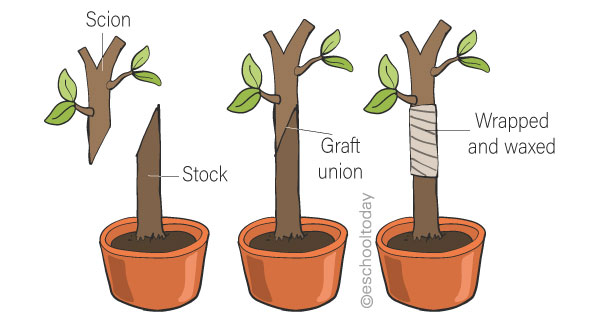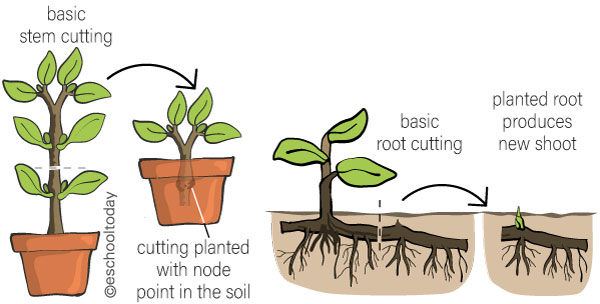- Asexual Reproduction
What is Artificial Vegetative Propagation?
Artificial propagation of plants includes these four main processes:
Grafting:
The grafting process involves joining the shoot system of a plant (known as a scion) to the root system of another plant (known as the stock). To do this, the scion and stock are cut diagonally and then placed facing each other. The cuts are made in such a way that the sizes (diameter) of the scion and stock are very close. They are then taped together and left to heal over time.

Cutting:
Plants such as roses and sugarcane can be cut at the points of nodes and internodes. These points are then placed in moist soils. After some time, adventitious roots develop at the points, and new plants begin to grow.
There are many types of cutting techniques, grouped into three categories: Stem, leaf, and root cutting.
- Stem cuttings include hardwood, semi-hardwood, and softwood cutting.
- Leaf-cutting includes leaf blade cutting, leaf vein cutting, leaf bud cutting, and leaf edge cutting.
- The third category is root cutting.

Layering:
In some plants like raspberries, the stem can be bent and buried in the soils around the plant. After some time, adventitious roots develop off the stem. This part of the stem is known as the layer. The stem can then develop into a new plant.
Tissue Culture:
In this modern technique, tissue scraped from the parent plant is placed in a special growing medium and under certain conditions. The tissue is nourished from the nutrients in the medium until new plants are produced. Orchids, Chrysanthemum, and Asparagus are examples of plants cultivated with tissue culture.
